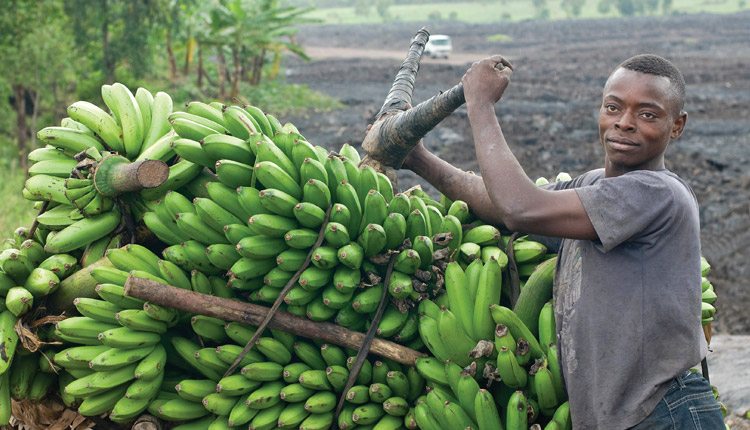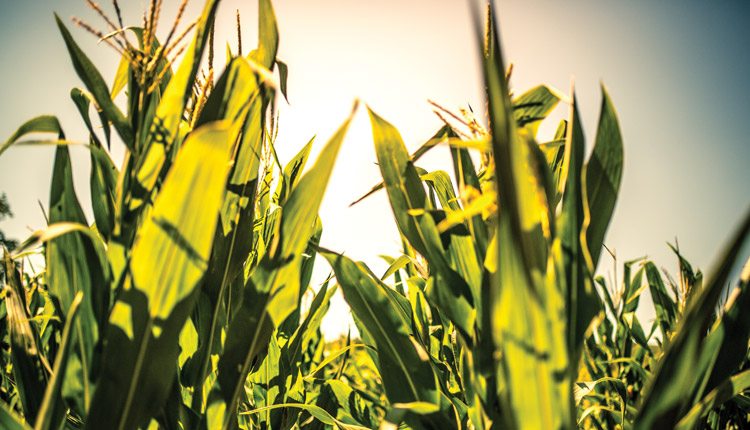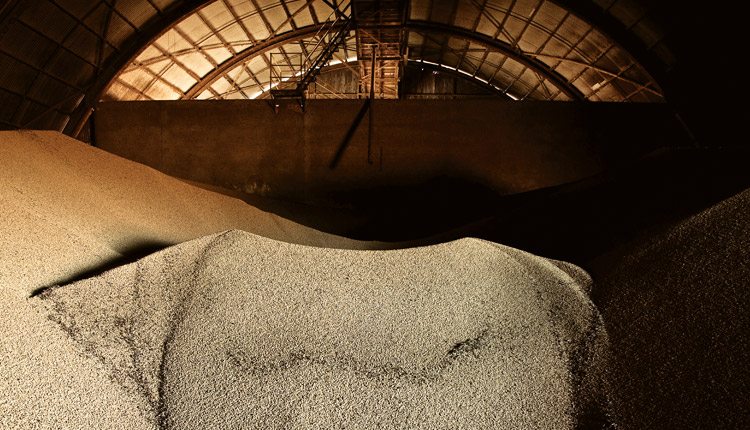No two regions are alike when it comes to the acceptance and adoption of biotechnology. Here, you’ll explore the GMO environment across continents.
Twenty years in and the adoption of genetically engineered crops around the world continues with 179.7 million hectares planted in 2015, down from 2014’s 181 million hectares, according to the International Service for the Acquisition of Agri-Biotech Applications (ISAAA). However, some countries such as the United States are decreasing the number of acres planted, while others such as Brazil are increasing acres.
The Top 5 countries planting biotech crops in 2015 are the United States, Brazil, Argentina, India and Canada. South Africa ranks ninth, planting 2.3 million hectares of biotech maize, soybean and cotton — down from expectations due to drought.
“More farmers are planting biotech crops in developing countries precisely because biotech crops are a rigorously-tested option for improving crop yields,” says Clive James, founder and emeritus chair of ISAAA. “Despite claims from opponents that biotechnology only benefits farmers in industrialized countries, the continued adoption of the technology in developing countries disproves that.”
Biofortification in Africa
While GM technology can deliver agronomic benefits to farmers, it can also deliver nutritional benefits to consumers. The potential of the GM banana is just one product of biotechnology that excites Mark Lynas, a former anti-GMO activist who is now a pro-GMO author and journalist who focuses on climate change.
Iowa State University has developed a GM banana that produces higher levels of Pro-vitamin A. Vitamin A deficiency is responsible for stunted growth and development, as well as impaired vision.
In rural areas, an increasing percentage of the population is at risk of malnutrition. According to the 2011 Uganda Demographic and Health Survey, Vitamin A deficiency affected one out of five young children and women of reproductive age, resulting in impaired resistance to infection and consequently higher levels of illness and mortality.
It’s out of need that Uganda and its crop breeding programs are placing a priority on enhancing crops with beta-carotene and iron, and the banana is one of Uganda’s staple foods — consumed by more than 70 percent of the population with almost every meal.
The country is second only to India in the production of bananas, and most are consumed locally. While Ugandans consume several biofortified crops, most are achieved through conventional breeding methods; however, breeders say the technicalities in banana breeding present challenges that genetic engineering has helped to overcome.
The banana is ready for human trials to test whether the banana produces enough vitamin A to be effective at treating nutrient deficiency. But Uganda does not have a biosafety law that allows scientists to conduct human trials. Any attempt to pass such a law has always been resisted by anti-GM activists, although most Ugandan stakeholders, including the president, understand the need for it.
This is just one example of the complexities amongst legal, political and cultural frameworks that must be addressed in helping bring more nutritious food to more people.
“There are numerous products in the pipeline for developing countries,” Lynas says. “There’s drought-tolerant maize for Africa. There’s virus-resistant cassava in Uganda and other East African countries. All these use GM technology because there is no way to make these improvements with conventional breeding.”
However, a lack of science-based and effective regulatory systems is a major constraint to adoption.
Despite the anti-sentiment, there are a number of African countries that grow biotech crops and that’s only forecast to grow in the future. In 2014, South Africa planted 2.7 million hectares, which was less than in previous years due to drought, according to ISAAA. Sudan increased Bt cotton acreage by nearly 50 percent. Cameroon, Egypt, Ghana, Kenya, Malawi, Nigeria, Swaziland and Uganda conducted field trials on priority African crops — the next-to-last step prior to approval.
Additionally, the Water Efficient Maize for Africa project, commonly known as WEMA, is scheduled to deliver the first stacked biotech drought tolerant maize with insect control in South Africa in 2017.
From a nutritional standpoint, one can only hope that Africa will see the same adoption of biofortified GM crops that China as seen with Bt cotton.
Food Security in Asia
After the commercialization of Bt cotton in 1997, about 7.1 million Chinese farmers had adopted the technology by 2009. Now it accounts for more than 85 percent of the total cotton area in China, according to Jikun Huang, a professor at the School of Advanced Agricultural Sciences at Peking University. Huang is also the director of the Center for Chinese Agricultural Policy.
“Our empirical studies show that the impacts of Bt cotton have been impressive,” Huang says. “On the average, Bt cotton increased cotton yield by 9.6 percent, reduced pesticide use by 34 kilograms per hectare, reduced labor input by 41 days per hectare, and despite higher seed costs, net profit increased by about $225 per hectare.”
But, Huang says the anti-GM sentiment has had a big impact on consumers’ attitudes toward GM food in China.
“Our surveys show that the percentage of urban consumers who perceived such food as unsafe for consumption increased by more than 30 percent from 2002-2012,” he says. “The public’s concerns about GM food have obviously affected China’s policy on the commercialization of GM technology.”
However, given the significant socioeconomic impacts of GM technologies, the Chinese government has reemphasized the role of biotech in ensuring the nation’s food security, Huang adds.
“GM technologies will play more important roles in improving agricultural productivity, ensuring food security and improving farmers’ welfare,” he says.
Earlier this year, the Chinese Ministry of Agriculture reported that is has mapped a plan for the future of GM crops, giving priority to the development of non-edible cash crops. For GM crops, China only allows the planting of insect resistant cotton and antiviral papaya for commercial purposes, explains Wu Kongming of the Chinese Academy of Engineering.
“China’s safety evaluation system on genetically modified crops is the world’s strictest in terms of technical standards and procedures,” Wu says.
The country also imports GM soybean, corn, rapeseed oil, cotton and sugar beet.
China, the world’s largest net importer of soybeans, imported 81.7 million tonnes of in 2015, which was 87.8 percent of its demand.
According to Liao Xiyuan of the Chinese Ministry of Agriculture, in the coming years, China will plant more non-GMO soybeans and improve yields to fill the gap between supply and demand. By 2020, China will expand its soybean planting area to 9.3 million hectares and work to more than triple yields.
Liao says that next in line comes indirectly edible and then edible crops.
Within the next five years, China could push forward with the commercial cultivation of pest-resistant GM corn, according to Liao, who believes China cannot afford to be left behind in the GM sector and will continue to push forward with its innovation efforts.
This ease into the commercial cultivation of GM technology in China is designed to help bring members of the public along and allow for the proper education and communication. However, concerns about China’s growing dependence on food imports might be causing policymakers to rethink. This year’s annual statement on agriculture that was released by the leadership in January, said that for the first time China would “carefully promote” GM food crops.
Matin Qaim, a professor of international food economics and rural development at the University of Göttingen in Germany, notes that China faces a similar situation as Europe where much of its research on GMOs has not gone beyond the limits of the laboratory setting.
“They have not brought most of these products to market simply because they’re concerned about consumer sentiments,” Qaim says.
Innovation Stifled in Europe
An understanding of the real-world importance of GM crops is essential to countering anti-GMO sentiment, notes Justus Wesseler, an economics professor at Wageningen University in the Netherlands. He says the consequences of banning GMOs are being clearly seen in Europe.
Europe does import GMOs that it needs, but currently only cultivates one crop — Bt maize — in Spain, Portugal, Czech Republic, Slovakia, Romania and Poland. This is not necessarily bad for large seed and chemical companies, according to Wesseler, “as they can continue to sell their ‘old’ products in Europe and the pressure to innovate is low.”
However, he says the high regulatory costs of the EU’s cultivation restriction on GMOs is a barrier to entry into the market, and therefore harms smaller seed companies.
“We did calculations for herbicide resistant maize. The EU would have gained about 82 million euros per year in 2005 prices, which, roughly speaking, has been a loss of about 820 million euros from 2005-2015. For herbicide resistant sugar beets, we calculated annual benefits of roughly 170 million euros every year for that 10-year period. These net benefits would be distributed between farmers and the downstream supply chain, including consumers.”
Furthermore, Wesseler notes that if the importing of GMOs to Europe were suddenly banned, this would be extremely harmful to agriculture in the EU as well.
“Feed prices would substantially increase in the short term. Of course markets would adjust in the long run, but this would be a very costly strategy. We would need more land to produce the same amount of goods, we’d see an increase in pesticide use — and as a result — damage to the environment and to human health,” he says.
Like Qaim, Wesseler has also studied the consequences of a GMO ban in the developing world, and the results of regulatory delays or outright bans on GM products paint a dire picture for the economies of developing nations, too. For example, regulatory roadblocks that prevent a bacterial wilt-resistant GM banana from being grown in Uganda cost the African nation as much as $300 million a year, according to the study results.
Reduced yields and higher prices for consumers aside, the social ramifications of a GMO ban are something not often considered by the people who advocate for such a ban. That’s according to Britain’s Mark Lynas, a former anti-GMO activist who is now a pro-GMO author and journalist who focuses on climate change.
“Imagine if mobile phone technology had been banned when it was beginning to emerge 30 years ago. Our lives would be very different than they are now,” he says.
“Back then, I think it would have been impossible to quantify the effects of such an approach, but it illustrates the dangers that could result if you try and ban science and the progress it results in, even more so when it’s based on fears that are entirely unsubstantiated and misinformed.”
As anti-GMO sentiment in Europe rages on, Lynas witnesses firsthand the very real social impact of that sentiment, which has all but closed the door to GMO crops being grown in Europe and resulted in a shallower talent pool in the scientific community.
“A lot of scientists are leaving Europe. A lot of research is no longer being done here because they know their work will not be deployed outside the laboratory,” he says. “Europe is losing its edge in all sorts of new technologies. It’s more likely to go elsewhere, unfortunately.”
Wesseler agrees. “Research is already moving to other places. Banning GMOs would only speed the process. We see this in the decline of patent applications in the life sciences field,” he says. “We not only observe it in the field of GMOs, but also in biological control methods, new enzymes, pharmaceutical products and others.”
South America Excels
Brazil is the second largest grower globally with 44.2 million hectares planted; that’s 25 percent of global production. Farmers in Brazil planted the stacked heat tolerant, insect resistant soybean on a record 11.9 million hectares in 2015, just three years after its launch, according to ISAAA.
Argentina saw 24.5 million hectares planted with GM crops.
While many farmers in South America have access to GM technology, the controversy here lies with royalty collection. More and more, companies are resistant to bringing their newest innovations to the market without having some form of compensation in place for the research and development that went into those new innovations.
In South America, royalty collection systems vary from country to country. For example, Uruguay is known to have a good system in place, while Brazil and Argentina do not. This leads to consternation in the market.
For instance, Monsanto recently canceled its plan to sell its new biotech seeds in Argentina because of disputes over royalty payments. Monsanto had been discussing
a royalty collection plan with government officials, but agricultural authorities under Argentine President Mauricio Macri questioned Monsanto’s efforts to collect payments from farmers.
In a statement, Monsanto’s Brett Begemann, president, said that the government’s actions were “not consistent” with its past promises to support intellectual property rights and private agreements.
In order to bring more innovative products into the region, frameworks such as royalty collection need to be developed.
Controversy in North America
Moving north to the United States, there are currently nine crops are approved for commercial planting — maize, soybean, cotton, canola, sugar beet, squash alfalfa and papaya and potato. In Canada, four crops are approved.
This year, the United States saw a number of firsts, including the commercialization of Innate Generation potatoes, Arctic Apples and GM salmon. Additionally, the first non-transgenic genome-edited crop to be commercialized globally, SU Canola, was planted in the United States.
The big issue here is consumer acceptance and whether the U.S. would follow Europe’s lead. The seed industry continues to try and educate the public about the science and technology, but it can be difficult to cut through all the noise.
The biggest question is how new breeding technologies will be received by both regulatory authorities and consumers, Wesseler notes.
“Companies are innovative enough to develop new tools to respond to the challenges agriculture is facing in developed as well as developing countries,” he says. “The most significant bottleneck isn’t the technology itself, it’s the regulatory systems. They can speed up or delay the innovation process.”
Influencing those system in a positive way is key, Qaim says, but is anything but easy.
“Consumers are so misinformed and there’s so much pressure on policymakers not to move forward and approve various technologies that could have many benefits,” he says.
“I have a lot of optimism that, in the long run, people will come to their senses and we will realize that without modern biotech and genetic engineering, we will not be able to manage the challenges of sustainable development in the future. But in the short term, I’m not optimistic we’ll see dramatic new GM crops being released and accepted worldwide.”
















